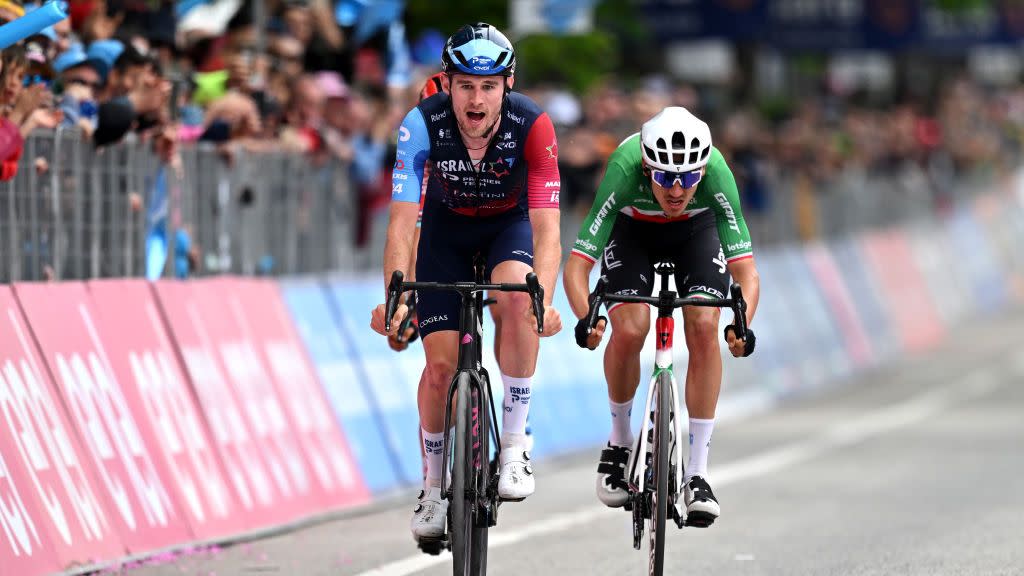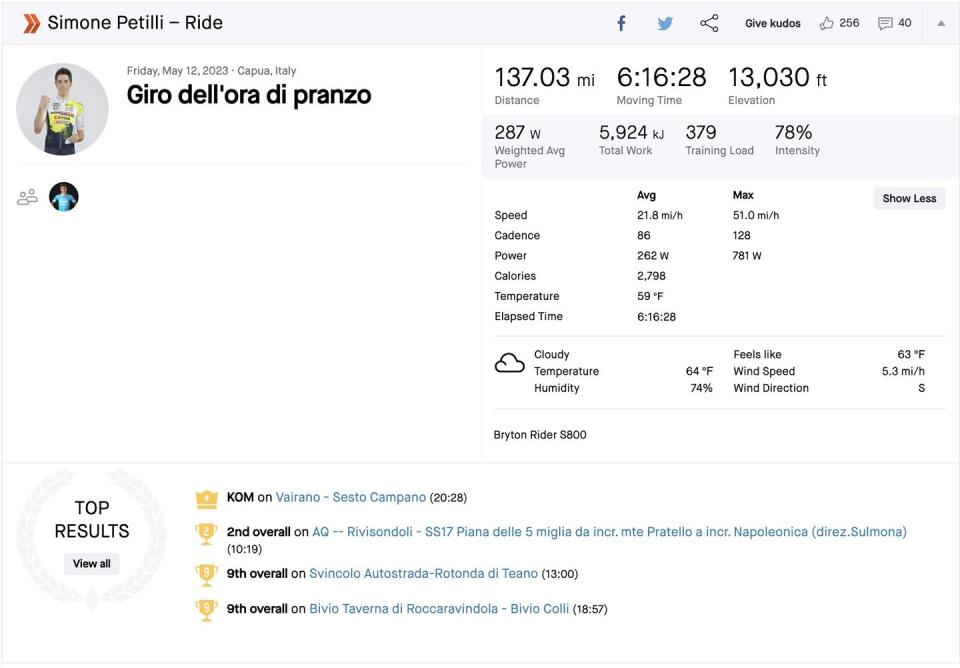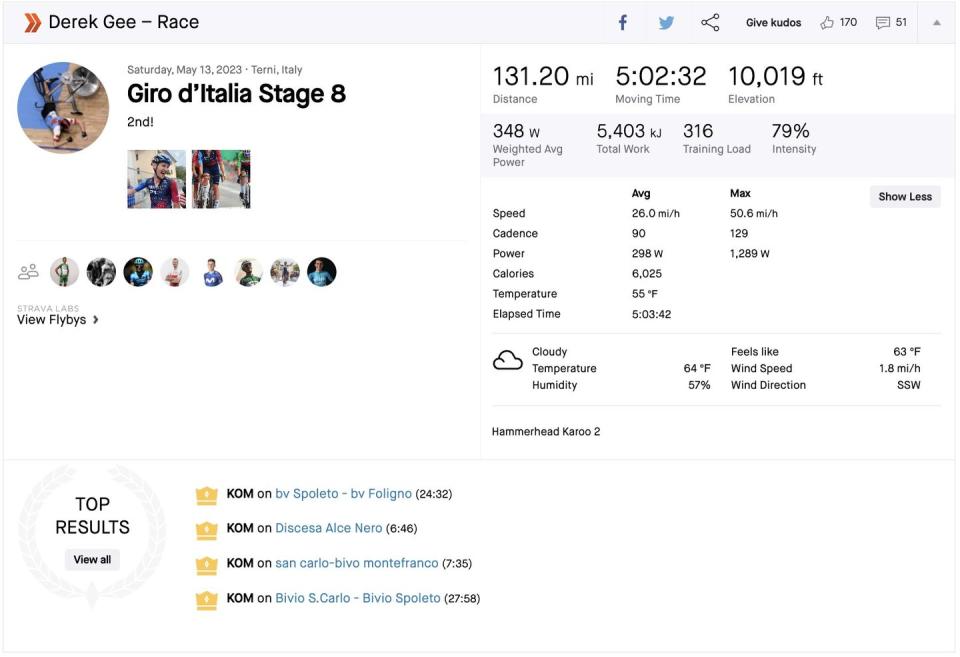What Kind of Power Does It Take to Race the Giro D’Italia? And How Do Your Stats Compare?

Have you ever wondered if you could put out power numbers that would rival a top Pro Tour racer? Or maybe you’re just curious exactly how hard they’re working during the course of a very, very long race.
Fortunately, Strava makes it easy to unpack rider data these days, so we’re taking a look at some of the top rides on these three very different stages: a mountain stage, a climbing stage, and a time trial during the 2023 Giro d'Italia.
Stage 7 saw the Giro’s first true mountain stage, with a summit finish on the 2,135-meter Gran Sasso Italia. What does it take to hit that final climb in front?
Then, in Saturday’s tough stage to Fossombrone packed with sharp climbs, what does the power profile look like for the breakaway that actually managed to stick?
And for some really high wattage, we look at the Giro’s first long, individual time trial, a 33.6K race from Savignano al Rubicone to Cesena.
Stage 7: Capua to Gran Sasso d'Italia (218K)

Davide Bais took the stage win, and shared it on Strava. However, we got more information from third place finisher Simone Petilli, who had his power data visible on Strava.
In the 6:16-long race, he averaged 262 watts, maxing out at 781 watts. He also burned an impressive 2,798 calories in the process.
The mountain stage was clearly more diesel than sprint-focused, especially when compared to the data from the next stage (below). That’s not to say Petilli isn’t impressive: Averaging 262 watts for 6:16 and still having enough in the tank for a mountaintop finish? Not too shabby.
Stage 8: Terni to Fossombrone (207K)

Young Canadian rider Derek Gee managed to stick with a successful breakaway in Stage 8, though he, Fillipo Zana and Warren Barguil eventually lost to Ben Healy, who finished 1:49 ahead of the group of three.
Still, Gee was able to win the sprint for second, taking a silver medal on the day—a huge score for a racer in his Giro debut.
While the stages were similar in length, the shorter and punchier climbs (often referred to as walls, given their steepness) led to a much higher average power: a reported 298 watts.
Gee also had a huge sprint at the end, with a max output of 1,289 watts. Makes sense, since he had to beat out his two fellow breakaway riders to score that second place.
And as a track athlete when he’s not racing on the road, Gee’s ability to sprint on the flats is unsurprising. His ability to average 298 watts over several hours, though, clearly shows why he’s focusing on the road.
Stage 9: Savignano al Rubicone to Cesena (33.6K)

Stage 9’s 33.6-kilometer time trial was won by Remco Evenepoel, but it also served as the swan song for the racer, who was forced to abandon the Giro due to a positive COVID test.
He explained it in possibly the best emoji format ever on his Strava file, saying “🥇🏆💖 but CIAO GIRO 🦠 F * C K.”
While he didn’t share power numbers, his effort was enough to net two KOMs on different segments. He averaged a wild 31.3 MPH through the course, maxing out at 41.9 MPH. His cadence was a smooth 98 on average, and maxed at 128 RPM.
Also worth noting, Garaint Thomas posted a time just a second slower than Evenepoel’s. Sadly, Thomas doesn’t post on Strava, so we can’t compare their tactical approaches to the course.
We do want to shout out #13 on yesterday’s stage, American racer Will Barta, who did share his race to Strava with the ultimate flex: he’s letting Strava auto-label every stage, so it just shows up as Afternoon Ride. Kudos for the #humblebrag.

What is interesting about his file is the wider range in cadences compared to Evenepoel—his average is 91, 7 RPMs less than Evenepoel, with a max of 152 RPM, which is significantly higher than Evenepoel's fastest spinning. While this could be a riding style preference, it’s worth noting.
Arguably, Evenepoel’s success in the ITT is partially due to his smooth pedaling style, with fewer ultra-fast spinning moments but an overall faster cadence.
Lastly, a caveat. It's worth pointing out that Strava data is often inaccurate as it relies entirely on the inputs that it receives. Not every cadence sensor is going to be perfect, nor is every power sensor. Will that stop us from peeping the pro’s Strava feeds in awe? Absolutely not!
You Might Also Like

